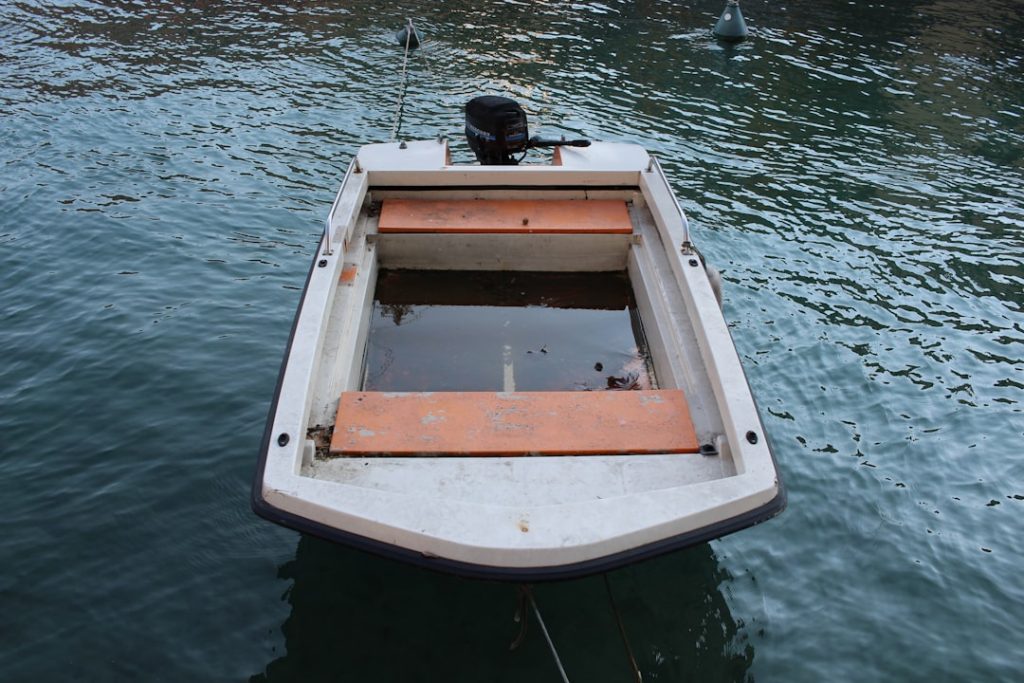Outboard boat motors are essential for powering a wide variety of watercraft, from small fishing boats to larger recreational vessels. These motors can be categorized into several types based on their design, power source, and intended use. The most common types include two-stroke and four-stroke engines, electric outboards, and high-performance racing motors.
Two-stroke engines are known for their simplicity and lightweight design, making them a popular choice for smaller boats and those who prioritize speed. They operate by completing a power cycle in just two strokes of the piston, which allows for a more compact engine. However, they tend to be less fuel-efficient and produce more emissions compared to their four-stroke counterparts.
Four-stroke outboard motors have gained popularity due to their efficiency and environmental benefits. These engines operate on a four-stroke cycle, which means they complete a power cycle in four strokes of the piston. This design allows for better fuel economy and lower emissions, making them more suitable for environmentally conscious boaters.
Additionally, four-stroke engines tend to be quieter and provide smoother operation, which enhances the overall boating experience. Electric outboards are another emerging option, powered by batteries and offering a clean alternative to traditional fuel engines. They are particularly appealing for those who frequent quiet lakes or rivers where noise pollution is a concern.
Each type of outboard motor has its unique advantages and disadvantages, making it crucial for boaters to understand these differences when selecting the right motor for their needs.
Key Takeaways
- Outboard boat motors vary by type, power, and fuel efficiency, impacting performance and suitability.
- Key factors in choosing a motor include boat size, intended use, fuel type, and budget.
- Leading brands offer reliable options, with quality and warranty considerations important for buyers.
- Proper maintenance and care extend motor life and ensure optimal performance.
- Innovations in outboard motors focus on eco-friendliness, enhanced power, and advanced technology integration.
Factors to Consider When Choosing an Outboard Boat Motor
When selecting an outboard boat motor, several factors come into play that can significantly influence the performance and suitability of the motor for your specific boating activities. One of the primary considerations is the size and weight of the motor in relation to the boat itself. The horsepower rating of the motor should match the boat’s specifications to ensure optimal performance.
For instance, a small dinghy may only require a 2-5 horsepower motor, while larger vessels may need motors with 150 horsepower or more. Overpowering or underpowering a boat can lead to safety issues and inefficient operation. Another critical factor is the intended use of the boat.
Different activities such as fishing, water skiing, or leisurely cruising may require different types of motors. For example, if you plan to engage in water sports that demand quick acceleration and high speeds, a two-stroke motor might be more suitable due to its lightweight design and power-to-weight ratio. Conversely, if you are primarily using your boat for long-distance cruising or fishing, a four-stroke engine may be preferable due to its fuel efficiency and quieter operation.
Additionally, consider the availability of service and parts for the motor brand you choose, as this can impact long-term maintenance and repair costs.
Top Brands and Manufacturers of Outboard Boat Motors

The market for outboard boat motors is populated by several reputable brands known for their quality, reliability, and innovation. Yamaha is one of the leading manufacturers in this space, offering a wide range of outboard motors that cater to various boating needs. Their four-stroke engines are particularly well-regarded for their fuel efficiency and low emissions.
Yamaha also provides advanced features such as digital control systems and integrated fuel management technology, enhancing the overall user experience. Another prominent player is Mercury Marine, which has been in the business for decades and is known for its high-performance outboards. Mercury’s Verado series is especially popular among recreational boaters seeking powerful and efficient engines.
The company emphasizes innovation with features like supercharging and advanced noise reduction technologies. Honda Marine is also noteworthy for its commitment to producing environmentally friendly outboards that meet stringent emissions standards while delivering reliable performance. Each of these brands has carved out a niche in the market, providing boaters with options that suit their specific requirements.
Where to Find Quality Outboard Boat Motors for Sale
| Source | Type of Motors Available | Price Range | Warranty | Customer Rating | Additional Services |
|---|---|---|---|---|---|
| Authorized Dealerships | New, OEM Motors | High | 3-5 Years | 4.5/5 | Installation, Maintenance |
| Online Marketplaces (e.g., eBay, Amazon) | New & Used Motors | Low to Medium | Varies by Seller | 3.8/5 | Return Policy, Shipping |
| Boat Shows & Expos | New Motors, Demo Units | Medium to High | Manufacturer Warranty | 4.2/5 | On-site Discounts, Consultations |
| Local Marine Supply Stores | New & Refurbished Motors | Medium | 1-3 Years | 4.0/5 | Repair Services, Parts |
| Classified Ads & Forums | Used Motors | Low | None or Limited | 3.5/5 | Peer Reviews, Negotiation |
Finding quality outboard boat motors for sale can be accomplished through various channels, each offering unique advantages. One of the most common places to start is at local marine dealerships, where you can find new models from reputable manufacturers. These dealerships often provide expert advice and support, helping you choose the right motor for your boat.
Additionally, purchasing from a dealer typically comes with warranties and service options that can provide peace of mind. Online marketplaces have also become increasingly popular for buying outboard motors. Websites like eBay, Craigslist, and specialized marine equipment sites offer a vast selection of both new and used motors at competitive prices.
However, when buying online, it’s essential to conduct thorough research on the seller’s reputation and ensure that you are purchasing from a trustworthy source. Inspecting used motors in person or requesting detailed photographs and information can help mitigate risks associated with online purchases. Furthermore, attending boat shows or marine expos can provide opportunities to see various models up close and speak directly with manufacturers or dealers about their products.
Tips for Maintaining and Caring for Your Outboard Boat Motor
Proper maintenance is crucial for ensuring the longevity and performance of your outboard boat motor. Regularly checking the oil level is one of the simplest yet most effective ways to keep your engine running smoothly. For two-stroke engines, using high-quality oil mixed at the correct ratio is essential to prevent engine damage.
In contrast, four-stroke engines require regular oil changes according to the manufacturer’s recommendations to maintain optimal performance. Another important aspect of maintenance is inspecting the fuel system. Stale fuel can lead to starting issues and poor engine performance; therefore, it’s advisable to use fresh fuel and add a fuel stabilizer if you plan on storing your boat for an extended period.
Additionally, cleaning or replacing fuel filters regularly can prevent debris from clogging the system. It’s also wise to check the propeller for any signs of damage or wear, as a damaged propeller can significantly affect performance and fuel efficiency.
The Benefits of Upgrading to a New Outboard Boat Motor

Upgrading to a new outboard boat motor can yield numerous benefits that enhance both performance and enjoyment on the water. One of the most significant advantages is improved fuel efficiency offered by modern engines compared to older models. Advances in technology have led to more efficient combustion processes and better fuel management systems, allowing boaters to travel further on less fuel.
This not only saves money but also reduces environmental impact. In addition to fuel efficiency, newer outboard motors often come equipped with advanced features that enhance usability and safety. Many modern engines include digital controls that provide precise throttle response and easier operation, making them more user-friendly for both novice and experienced boaters alike.
Features such as integrated GPS systems or smart monitoring capabilities allow users to track performance metrics in real-time, providing valuable insights into engine health and efficiency. Upgrading can also mean quieter operation due to advancements in noise reduction technology, contributing to a more pleasant boating experience.
How to Properly Install an Outboard Boat Motor
Installing an outboard boat motor requires careful attention to detail to ensure safety and optimal performance. The first step involves selecting the appropriate mounting location on the transom of the boat. It’s essential to follow the manufacturer’s guidelines regarding height and alignment; improper installation can lead to cavitation or poor handling characteristics on the water.
Once you have determined the correct position, secure the motor using bolts that meet specified torque settings. After securing the motor, connect the necessary wiring harnesses according to the manufacturer’s instructions. This typically includes connecting power cables, ignition wires, and any additional components such as trim switches or control cables.
It’s crucial to ensure all connections are tight and free from corrosion to prevent electrical issues down the line. Finally, after installation is complete, conduct a thorough inspection before taking your boat out on the water; check fluid levels, test controls, and ensure that all safety features are functioning correctly.
The Future of Outboard Boat Motors: Trends and Innovations
The future of outboard boat motors is poised for significant transformation driven by technological advancements and changing consumer preferences. One notable trend is the increasing adoption of electric outboard motors as environmental concerns continue to rise among consumers. Electric motors offer a quieter operation with zero emissions during use, making them an attractive option for eco-conscious boaters who frequent sensitive waterways or urban areas where noise regulations may apply.
Additionally, innovations in battery technology are enhancing the viability of electric outboards by providing longer run times and faster charging capabilities. Companies are investing in research to develop lightweight yet powerful batteries that can compete with traditional gasoline engines in terms of performance. Furthermore, advancements in digital technology are leading to smarter outboards equipped with integrated sensors that monitor engine health in real-time, providing users with valuable data that can inform maintenance decisions and improve overall efficiency.
As manufacturers continue to innovate in response to market demands, we can expect further developments in hybrid systems that combine traditional combustion engines with electric propulsion. This hybrid approach aims to maximize efficiency while minimizing environmental impact, catering to a broader range of boating enthusiasts who seek versatility in their watercraft experiences. The future landscape of outboard motors will likely reflect a blend of performance, sustainability, and advanced technology that enhances both functionality and enjoyment on the water.


